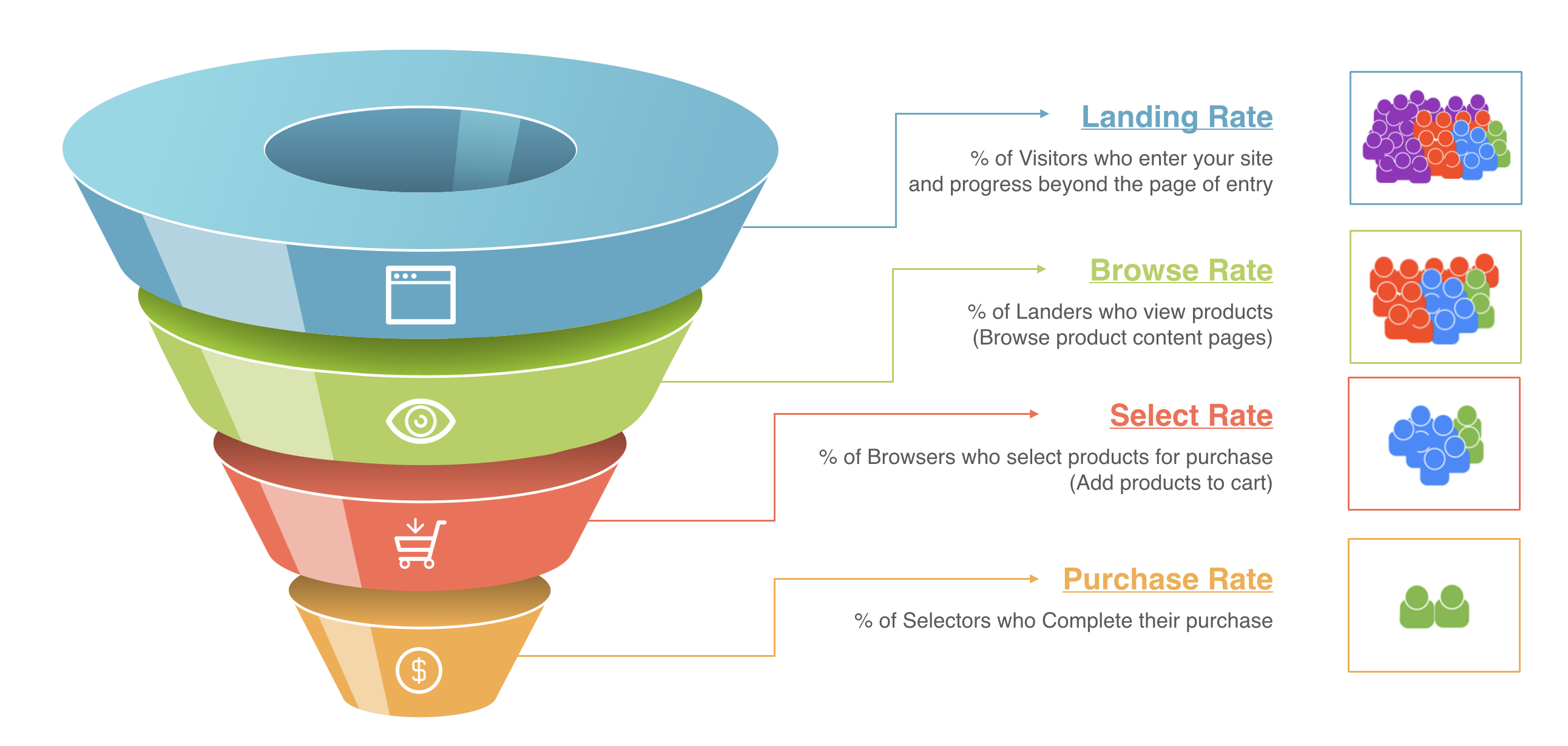The Monetate experience structure is made up of several parts. All Monetate experiences have the following parts:
Automated Personalization experiences have all those parts along with HOW for defining context.
As you build an experience, consider each part as an individual question that you need to answer.
- Why are you running this experience and how will you measure its success?
- Who are you trying to affect?
- What experience are you serving to your target audience?
- When do you want the experience to run?
And for Automated Personalization experiences, you also need to consider this question:
- How are you going to execute this experience?
Plan an Experience
To best illustrate the way to plan for an experience, we'll abstract the concept of the Monetate experience somewhat. While most of the steps in the process tie directly to building out the experience, HOW is the lone exception. For the purpose of this exercise, HOW more closely relates to planning the experience type that you select rather than Engine context or holdout selection for Automated Personalization experiences.
WHY
The WHY part of an experience is your opportunity to ask yourself how you identify your key opportunities. The most effective means to determine an answer is to consider your corporate and team goals as well as the data you have available to help inform your decision.
The data you have available tells a story. Consider a customer's purchase journey on your site. Each step in the funnel offers you potential data to mine.

With that said, you should choose a key performance indicator (KPI) that is closest to the part of the funnel that you are testing.

Consider too that your sample size, or audience, gets smaller as you move through the funnel. That means an experience may take longer to reach statistical confidence. It may take longer to derive actionable data from your experience if you're testing parts of your funnel that don't have much visitor traffic.
WHO
The WHO part of an experience is your opportunity to ask yourself who you are trying to affect with this experience. You can explore the segments you have available in a number of categories, including these:
- Traffic sources
- New and returning visitors
- Browser history
- Purchase history
- Offline behavior
- Weather
- CRM activity
- In-session behavior
- Device-specific behavior
When selecting a segment for your test, consider a category that meets these criteria:
- Is easiest to measure and track at a high volume
- The data suggests will be discrete and highly differentiated
- Will influence buying decisions across the broadest range of products on your site
- Is the easiest to execute on
WHAT
As you build out the WHAT part of an experience, you should ask yourself what experiences you should show to your customers. Consider the following questions as you select the actions for an experience to drive the biggest impact:
- Is this action in line with key business objectives?
- Is this action in a high-traffic location?
- Is this action above the fold of the page?
- Is this action visible to a customer within the first 5 seconds of landing on a page?
- Is this action an opportunity for personalization?
- Is this action relatively easy to implement, or does it require developer support?
- Does this action increase or facilitate customer motivation?
- Is this action measurable
- Does this action provide an opportunity to use first-party data?
WHEN
The WHEN part of an experience should be closely aligned with company objectives, goals, and marketing plans. You may want to consider some of the following questions:
- Are you running any special promotions for a specific amount of time?
- Is there a particular holiday promotion that you plan to run?
- Are there experiences running concurrently on your site that you need to be aware of?
- Is a promotion only valid during certain times of the day?
- Should the promotion run indefinitely or for a finite time?
These considerations are only a small subset of timing-related issues you should keep in mind. Any experience you create should be a part of your overall testing/personalization plan. Working a schedule out in advance and planning for what happens when and what happens next is vital to your overall success. Of course, nothing should be entirely set in stone. Allow yourself some flexibility to adjust based on successes and missteps and lessons you learn along the way.
HOW
As previously mentioned, the HOW part allows you to plan the type of experience you want to select. Familiarizing yourself with the experience types prior to planning is certainly a good idea. You can find experience descriptions in Web Experiences Overview.